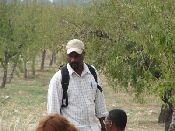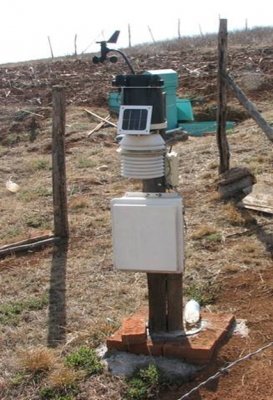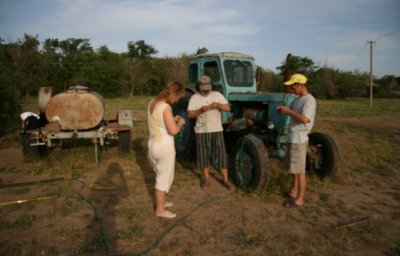|
Research theme coordinator: International Institute for Geo-information Science and Earth Observation, NL
... in collaboration with all the study site teams:
TESTING SOIL AND WATER CONSERVATION TECHNOLOGIES: How effective are we in combating desertification and guaranteeing a sustainable land use?
Thatlast question, “how well does a technology work?” is at the heart of WB4, but not so easy to answer, in spite of decades of experience. The question "why measure it again, don't you know enough?" is a valid one. But the fact is that world is changing rapidly, and old technologies need to be adapted or new ones designed to keep up with the pressures of climate change and population growth. For instance the picture below shows our site in Morocco, where a large lake has been created for water supply which is rapidly filling up with sediment. The technologies there must not only deal with the immediate situation of the farmer, who struggles to get a decent crop, but also with the filling up downstream of the dam with sediment. Since the demand on that drinking water is growing with a rapidly developing city of Rabat, finding a solution becomes more urgent.
On the one hand we must improve, or certainly not endanger, the situation for the stakeholders. On the other hand we would like to combat land degradation that is the result of desertification. Here we have a potential clash: imagine you need irrigation to grow crops but in doing so you deplete the groundwater. A water harvesting technique to save groundwater may well decrease your yield but save the groundwater eventually. Is that acceptable? Is it worth the investment in the short and long run? What is more, with water harvesting you catch overland flow, so you limit soil erosion and conserve the fertile topsoil. Is that enough? The answer is in a careful and honest weighing of costs and benefits for man and ecosystem.
This Research Theme maybe shows the full potential and effort of this project, with an impressive number of experiments. On the 16 sites around the world we test 22 technologies as they are selected by the local stakeholders in Research Theme 3. These sites have different landscapes, climate, land use practices and in total 57 experiments are being done for 2 to 3 years! This cannot be done without the dedicated help and support of the people in the sites: click here (** link to be added) if you want to meet them!
To make it all work we decided to adopt a simple, and hopefully effective, strategy. Wherever possible we compare the effect of a conservation technology by employing it on a field and comparing it to an adjacent field that remains 'untreated'. This is repeated for 2 to 3 years, depending on the local circumstances.
The main benefit is that the experiments happen on a scale directly useful to local stakeholders, and already the experience of the site coordinators show that the experiments have a great demonstration value. The drawback we cannot test each combination of soil, slope and land use, not even always very representative samples. This is where the science kicks in. By careful monitoring of the local climate, soil water, sediment transported of the plots, observing yields and many other parameters, we aim to understand the mechanisms of sufficiently to put the results in a wider context. Although this may sound very technical and detailed, the costs and benefits for the stakeholder are kept in focus at all times.
Of course this needs some organization, and this research theme is developed in a number of stages which are based on the knowledge we have gathered from the other themes.
|
||||||||||||||||||

Acknowledgement
The DESIRE project was
|
DESIRE brought together the expertise of
26 international research institutes
and non-governmental organisations.
This website does not necessarily
represent the opinion of the
European Commission. The European
Commission is not responsible for
any use that might be made of the
information contained herein. 
 4. Implementing field trials
4. Implementing field trials







